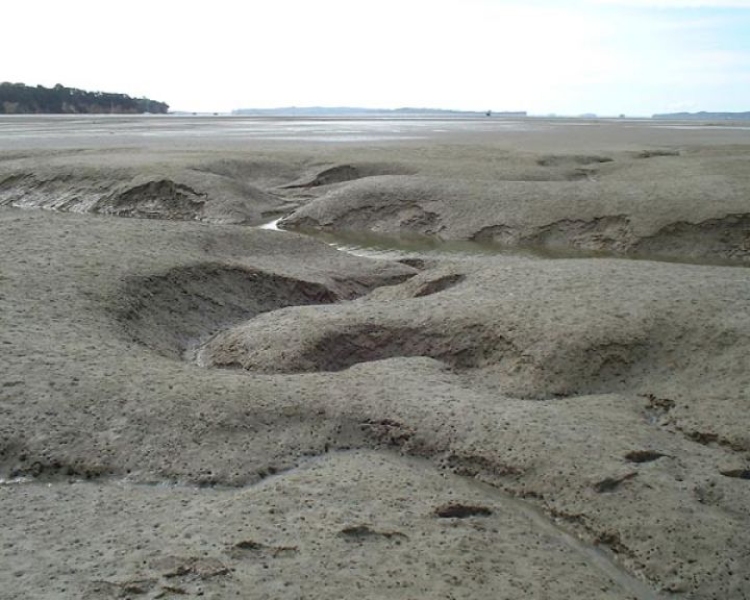NIWA has developed an Urban Stormwater Contaminant (USC) model to enable urban planners to predict sedimentation and heavy metal accumulation in estuaries and identify problem areas in order to target mitigation measures.
The model supports decision making by predicting contaminant accumulation under various catchment development scenarios over 50-100 year timescales.
The issue
Land-derived sediments and heavy metals are two of the main contaminants threatening the health of New Zealand’s estuaries:
- heavy metals are washed from the urban landscape and accumulate in estuary sediments, where they can reach toxic levels. They include zinc from roofs and car tyres, and copper from car brake pads and building materials.
- sedimentation can smother habitats and cause broad shifts in the structure and functioning of the estuarine ecosystem. It can bring about changes in seafloor substrate (e.g. from sandy to silty). Such changes alter the habitat for seafloor-dwelling species and may bring associated ecological degradation (e.g. mangrove spread, loss of shellfish beds).
To plan catchment development that also achieves environmental goals in the estuary, we need to predict rates and locations of sediment and heavy metal accumulation over decades, which is the relevant timeframe for planning.
Existing numerical estuary models can be used to predict the dispersal of freshwater, sediments, and other contaminants discharged from streams and stormwater overflows during rainstorms. But such models cannot be used to make predictions on the planning timescale.
The approach
The USC (Urban Stormwater Contaminant) model has been developed to:
- make predictions of sedimentation and heavy metal accumulation in estuaries over planning timescales of 50–100 years
- it also tracks the movement of sediments and heavy metals over the whole pathway from the land to the sea. This enables identification of links between sources (on the land) and sinks (in the estuary) so that mitigation measures can be targeted at the appropriate places.
The USC model combines information from several underlying models, including:
- a catchment sediment-generation model which predicts future sediment loads and grain sizes from the land
- a contaminant-generation model which predicts future heavy metal loads from the catchment
- an estuary hydrodynamics/sediment-transport model which indicates patterns of sediment transport and deposition in the harbour, including during and after rainstorms.
The model is intended to support decision-making by predicting various changes in seafloor sediments associated with different catchment development scenarios, allowing environmental costs to be weighed against benefits associated with development.
It is a truly predictive model because it explicitly uses predictions of future heavy metal and sediment loads from the catchment, rather than, say, simply extrapolating past heavy metal concentrations in seafloor sediments.
More information on USC Model requirements and outputs
The result
The USC model has been usefully applied in a number of areas, including the Central Waitemata and Southeastern Manukau Harbours.
Funding acknowledgement: The work has been funded by the Auckland Regional Council, Transit NZ, North Shore City Council, Waitakere City Council, Rodney District Council and the Foundation for Research, Science and Technology (Sustainability of Aquatic Ecosystems and Water Resources, C01X0215; Effects-Based Protection and Management of Aquatic Ecosystems, C01X0307).
686

